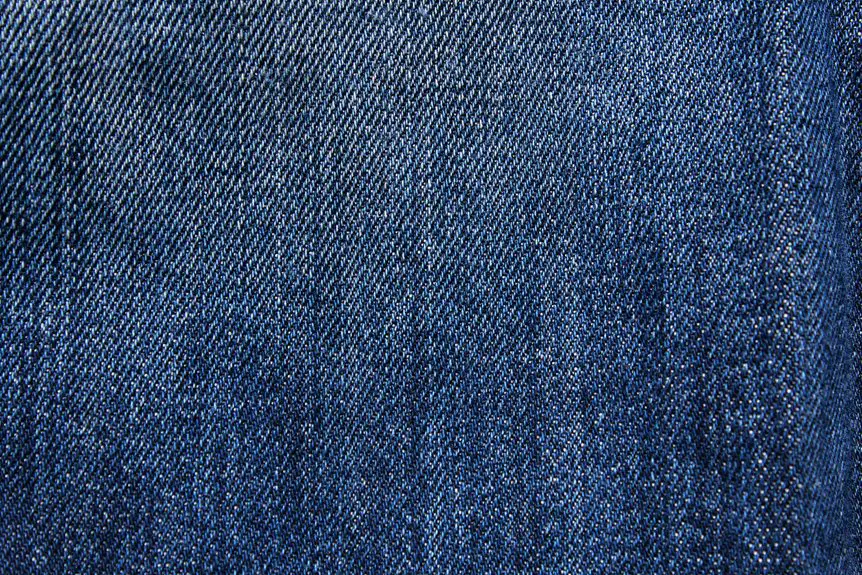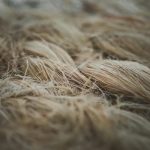If you want strength and durability, polyamide’s nylon-based fibers give you long-lasting wear with great stretch and shape retention, ideal for activewear. But if softness and breathability top your list, modal offers a cooler, more comfortable feel from renewable wood pulp. Keep in mind, polyamide relies on fossil fuels and produces microplastics, while modal is more eco-friendly but less durable. To find the best balance of comfort, sustainability, and toughness, keep exploring these fiber differences.
Table of Contents
Key Takeaways
- Polyamide is a strong, durable synthetic fiber from petroleum, while Modal is a soft, breathable semi-synthetic fiber made from beech tree cellulose.
- Polyamide excels in elasticity and shape retention, ideal for activewear; Modal offers superior comfort and moisture-wicking for casual wear.
- Polyamide is less breathable and can cause warmth, whereas Modal keeps the wearer cool and drapes well.
- Polyamide resists abrasion, pilling, and stretching better, making it more durable than the delicate, shape-losing Modal.
- Polyamide has a higher environmental impact due to fossil fuel use and microplastic pollution; Modal is biodegradable but requires chemical processing.
Composition and Manufacturing Process
Although both polyamide and modal are popular textile fibers, they differ considerably in their composition and manufacturing processes.
You’ll find polyamide is a synthetic fiber made from petrochemical products through a polymerization process, creating strong, durable fibers like nylon.
On the other hand, modal is a semi-synthetic fiber derived from cellulose found in beech trees. You’ll notice modal undergoes a chemical treatment to transform the wood pulp into fibers, a process that’s more environmentally friendly than fully synthetic methods.
While polyamide relies on fossil fuels and complex chemical reactions, modal combines natural raw materials with industrial processing.
Understanding these differences helps you choose the right fabric based on production impact and fiber origin, without yet considering how they feel or wear.
Comfort and Wearability
When you wear polyamide, you’ll notice its smooth texture and excellent elasticity, which make it ideal for activewear and garments that require durability. It fits snugly, moves with you, and resists wrinkles, keeping you comfortable during physical activities.
Polyamide’s smooth texture and elasticity make it perfect for durable, wrinkle-resistant activewear that moves with you.
However, polyamide can sometimes feel less breathable, which might cause you to feel warmer or sweat more in hot conditions.
On the other hand, modal offers a soft, breathable experience that feels gentle against your skin. It drapes well and keeps you cool, making it perfect for everyday wear or sleepwear.
If you prioritize softness and moisture absorption, modal will enhance your comfort, while polyamide excels when you need stretch and shape retention without sacrificing a sleek feel.
Durability and Care Requirements
You’ll want to contemplate how long each fabric lasts and how well it resists wear over time.
Understanding their maintenance needs can help you keep your clothes looking fresh without extra hassle.
Let’s explore what each material requires for cleaning and care.
Longevity and Wear Resistance
Because polyamide fibers are engineered for strength, they typically outlast modal fabrics under regular wear and washing.
When you choose polyamide, you’re investing in durability; it resists abrasion, stretching, and pilling much better than modal.
Modal feels softer but tends to lose shape and develop wear marks faster, especially if you wear it often or subject it to friction.
You’ll notice modal’s delicate nature means it can thin over time, making it less ideal for heavy-use garments.
In contrast, polyamide maintains its structural integrity longer, so your clothes keep looking fresh.
If you want longevity and resilience in your wardrobe, polyamide is the smarter choice.
Just keep in mind, its durability comes without sacrificing comfort entirely, offering a practical balance between strength and wear resistance.
Maintenance and Cleaning Tips
The durability of polyamide and the softness of modal both demand specific care to keep them looking their best.
With polyamide, you can machine wash on a gentle cycle using cold water to maintain its strength and elasticity. Avoid high heat when drying; instead, air dry or tumble dry low to prevent damage.
Modal, being more delicate, needs a gentler touch. Wash it in cold water with mild detergent and avoid bleach, which can weaken fibers. Always air dry modal to preserve its softness and shape.
Both fabrics benefit from turning garments inside out before washing to reduce friction.
Environmental Impact and Sustainability
When comparing polyamide and modal, you’ll find their environmental impacts differ markedly due to their production processes and raw materials.
Polyamide, a synthetic fiber, is derived from petroleum, making it energy-intensive and reliant on fossil fuels.
Polyamide is a synthetic fiber made from petroleum, requiring high energy and fossil fuel use.
Modal, on the other hand, is semi-synthetic, made from beech tree pulp, which is renewable but still requires chemical processing.
Consider these sustainability points:
- Polyamide contributes to microplastic pollution in oceans.
- Modal is biodegradable but depends on responsible forestry practices.
- Both fibers’ chemical treatments can affect water quality if not managed properly.
Common Uses and Applications
You’ll find polyamide and modal in a variety of apparel and textile products, each offering unique benefits.
Polyamide is popular in activewear and industrial fabrics, while modal shines in soft, breathable clothing and home textiles.
Let’s explore how these fibers fit into different uses and applications.
Apparel and Textiles
Although both polyamide and modal serve in various textile applications, you’ll find their unique properties often dictate their specific uses in apparel.
Polyamide, known for its strength and elasticity, is commonly used in activewear and hosiery, providing durability and stretch.
Modal, on the other hand, offers exceptional softness and moisture-wicking abilities, making it ideal for casual and luxury clothing.
When choosing between them, consider these apparel uses:
- Polyamide: sportswear, swimwear, and lingerie due to its resilience
- Modal: underwear, pajamas, and soft T-shirts because of its breathability
- Blended fabrics: combining polyamide’s toughness with modal’s comfort for versatile wear
You’ll appreciate how each fiber enhances your clothing’s performance and feel, depending on your needs.
Industrial and Home Uses
Beyond clothing, polyamide and modal find valuable roles in both industrial and home environments.
You’ll see polyamide used in automotive parts, ropes, and conveyor belts because of its strength and durability. It’s great when you need materials that resist wear and tear under tough conditions.
Modal, on the other hand, shines in home textiles like bed linens, towels, and upholstery due to its softness and moisture-wicking properties. When you want comfort and breathability in everyday items, modal is a smart choice.
In industrial settings, modal isn’t as common, but it’s sometimes blended with other fibers for specialized applications.
Cost and Value Comparison
When comparing polyamide and modal, understanding their cost and value helps you make an informed choice.
Polyamide, a synthetic fiber, generally costs less upfront but may wear out faster depending on use.
Modal, a semi-synthetic fiber made from beech trees, tends to be pricier but offers superior softness and durability, which can justify the investment.
Consider these points when weighing cost and value:
Key factors to consider include initial cost, comfort, durability, and long-term value when choosing your fabric.
- Polyamide: Lower initial cost, quick drying, less breathable
- Modal: Higher price, excellent comfort, longer-lasting feel
- Value: Modal’s durability and comfort often balance its higher price over time
Knowing these factors helps you pick the fabric that fits your budget and needs best.
Frequently Asked Questions
How Do Polyamide and Modal Fabrics React to Dyeing Processes?
You’ll find that polyamide absorbs dye quickly, giving vibrant colors, while modal takes dye evenly, producing soft, muted shades. Both respond well, but your choice depends on the finish and color intensity you want.
Are Polyamide and Modal Fabrics Hypoallergenic?
You won’t find polyamide completely hypoallergenic, but it’s durable and moisture-wicking. You’ll love modal’s softness and breathability, which often cause fewer allergies. Both fabrics suit different skin sensitivities, so choose based on your needs.
Can Polyamide and Modal Be Blended With Other Fibers?
You can definitely blend both fibers with others to enhance fabric qualities. Polyamide often combines with cotton or wool for durability, while modal mixes with cotton or spandex to boost softness and stretch.
Which Fabric Is Better for Athletic Wear, Polyamide or Modal?
When you’re chasing sweat like a shadow, polyamide’s your armor—durable, quick-drying, and stretchy. Modal feels soft but can’t outpace polyamide’s performance in athletic wear, keeping you cool and comfortable during every move.
Do Polyamide and Modal Fabrics Shrink After Washing?
You might notice polyamide resists shrinking since it’s synthetic, but modal can shrink a bit because it’s a natural fiber. To avoid surprises, always follow care labels and wash both fabrics in cold water gently.
- Where to Buy Sherpa Suede Fabric - July 12, 2025
- How to Draw or Illustrate the Texture of Suede Fabric - July 12, 2025
- What Is Baseball Suede Leather Fabric? - July 12, 2025







